Europe, British Isles, North East Wales, Flintshire, Basingwerk Abbey [Map]
Basingwerk Abbey is in Basingwerk, Flintshire.
In 1132 Ranulf Gernon 4th Earl Chester (age 33) founded Basingwerk Abbey [Map]. The first location of the abbey was at the nearby Hen Blas. In 1147 the abbey joined the Cistercian Order. It was a daughter house of Combermere Abbey [Map].
The Itinerary of Archbishop Baldwin through Wales: Book 2 Chapter 10. Many persons in the morning having been persuaded to dedicate themselves to the service of Christ, we proceeded from Ruthlan to the small cathedral church of Lanelwy [Map];167 from whence (the archbishop having celebrated mass) we continued our journey through a country rich in minerals of silver, where money is sought in the bowels of the earth, to the little cell of Basinwerk [Map],168 where we passed the night. The following day we traversed a long quicksand, and not without some degree of apprehension, leaving the woody district of Coleshulle [Map],169 or hill of coal, on our right hand, where Henry II., who in our time, actuated by youthful and indiscreet ardour, made a hostile irruption into Wales, and presuming to pass through that narrow and woody defile, experienced a signal defeat, and a very heavy loss of men.170 The aforesaid king invaded Wales three times with an army; first, North Wales at the above-mentioned place; secondly, South Wales, by the sea-coast of Glamorgan and Goer, penetrating as far as Caermarddin and Pencadair, and returning by Ellennith and Melenith; and thirdly, the country of Powys, near Oswaldestree; but in all these expeditions the king was unsuccessful, because he placed no confidence in the prudent and well-informed chieftains of the country, but was principally advised by people remote from the marches, and ignorant of the manners and customs of the natives. In every expedition, as the artificer is to be trusted in his trade, so the advice of those people should be consulted, who, by a long residence in the country, are become conversant with the manners and customs of the natives; and to whom it is of high importance that the power of the hostile nation, with whom, by a long and continued warfare, they have contracted an implacable enmity and hatred, should be weakened or destroyed, as we have set forth in our Vaticinal History.
Note 167. Saint Asaph, in size, though not in revenues, may deserve the epithet of "paupercula" attached to it by Giraldus. From its situation near the banks of the river Elwy, it derived the name of Llanelwy, or the church upon the Elwy.
Note 168. Leaving Llanelwy, or St. Asaph, the archbishop proceeded to the little cell of Basinwerk, where he and his attendants passed the night. It is situated at a short distance from Holywell, on a gentle eminence above a valley, watered by the copious springs that issue from St. Winefred's well, and on the borders of a marsh, which extends towards the coast of Cheshire.
Note 169. Coleshill is a township in Holywell parish, Flintshire, which gives name to a hundred, and was so called from its abundance of fossil fuel. Pennant, vol. i. p. 42.
Note 170. The three military expeditions of king Henry into Wales, here mentioned, were A.D. 1157, the first expedition into North Wales; A.D. 1162, the second expedition into South Wales; A.D. 1165, the third expedition into North Wales. In the first, the king was obliged to retreat with considerable loss, and the king's standard-bearer, Henry de Essex, was accused of having in a cowardly manner abandoned the royal standard and led to a serious disaster.
Before 1246 Dafydd ap Llewellyn Aberffraw Prince of Wales (age 33) gave St Winefrid's Well, Holywell [Map] to Basingwerk Abbey [Map].
In 1328 Basingwerk Abbey [Map] gained a market charter for Charlesworth, Derbyshire.
In 1536 Basingwerk Abbey [Map] was dissolved under the Dissolution of the Lesser Monasteries Act.
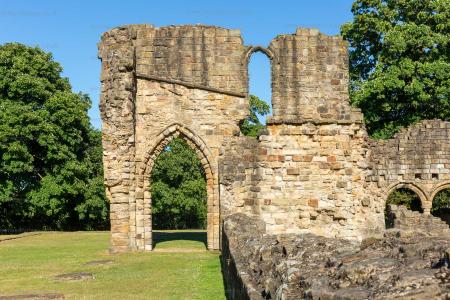
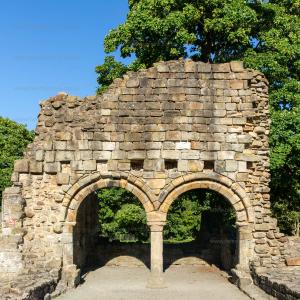
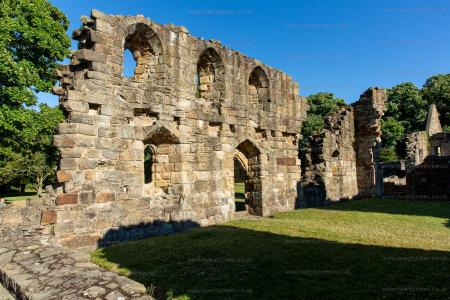
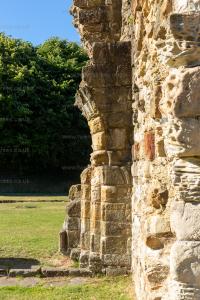
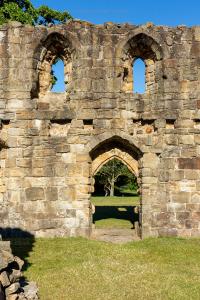
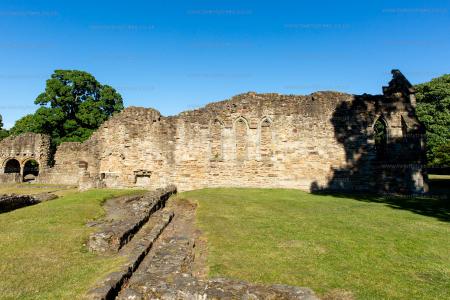
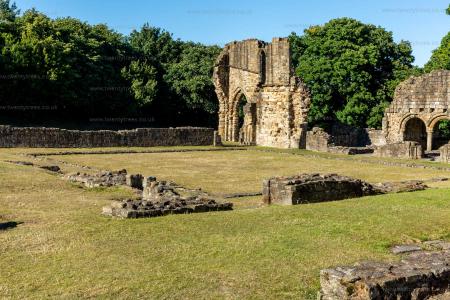
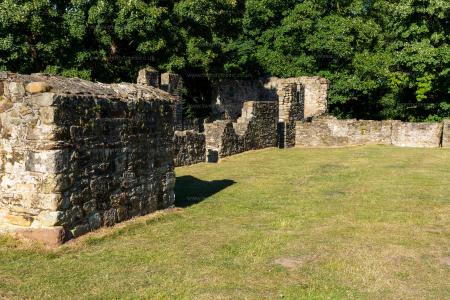
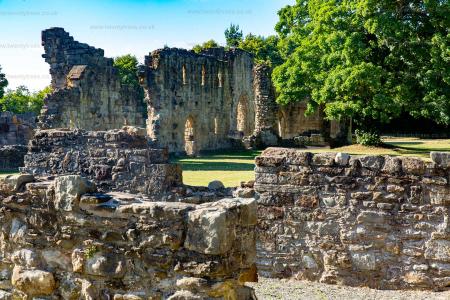
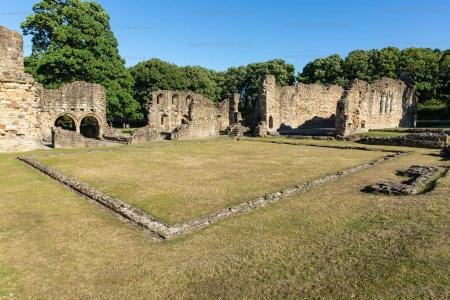
Archaeologia Cambrensis 1900 Basingwerk Abbey. Basingwerk Abbey [Map]. The effort (says a correspondent of the Manchester Guardian) which is to be made with the view of pre- serving the remains of Basingwerk Abbey, Flintshire, from further dilapidation, is rousing keen interest among archaeologists in Flint- shire, Cheshire, and even more distant places. The Flintshirc County Council have also the matter in hand, and the probability is that a strong committee will be formed to deal with the matter, and to preserve this beautiful ruin, with its rich historical associations, from being yet more rudely dealt with by the hand of time. The Abbey stands on rising ground not far distant from the Holyhead railway station. The origin of the name Basingwerk" is absolutely unknown. Learned writers in the Archceologia Cambrensis, and kindred publications, have made ingenious guesses and deductions on the subject, but none of them agree. With regard to the date of the foundation of the Abbey, it is stated by Bishop Tanner that Ranulph, Earl of Chester, began to build it about 1131, and that it was afterwards added to by Henry II, and bestowed upon the Cistercian Order in 1159. The accuracy of Tanner's conjecture is borne out by the confirmation of grants made to God, St. Mary, and the monks of Basingwerk" by Henry II, wherein the King says:—" And I moreover do grant and confirm to them all their tenements which Ranulph Earl of Chester and other barons have given to them, that is to say, Halliwelle and Falibroch, and the chapel of Basingwerk, in which they at first dwelt, with the mills and all their apourtenances." From the words "in which they at first dwelt," it is evident the monks had been some time settled at Basingwerk at the date of the granting of this charter. The charters of Llewelyn ap Iorwerth and his son, David, both speak of gifts which their predecessors had bestowed upon the monks of Basingwerk, and the probability, therefore, is that the original foundation was by one of the earlier princes of Wales. The Cistercians had no religious house in this country before 1128, so that the first monks at Basingwerk must have belonged to some other Order, perhaps the Fratres Gresei, as conjectured by the l% laborious" Leland. Giraldus de Barri (Cambrensis) was here in the train of Archbishop Baldwin, and he describes it as "cellula de Basingwerk" (the little cell of Basingwerk"). In the time of the first Edward we find that the Abbas de Basingwerk" was called to Parliament, and Edward gave one of them a tract of land at Gelli, in Whitford, where there used to be a chapel belonging to the monks of Basing- werk (it is now a farmhouse). There is no doubt that at one time the Abbey was a rich and flourishing one, with property in various parts of the country. Henry II confirmed to them, among other possessions, "a hundred shillings out of the revenues of Chester," and they also had the church of Holywell and the chapel of Colsul (Coleshill), the village of Wenhewm," tithes of fish from Rhuddlan and other places, and property in the English dioceses of Coventry and Lichneld. Tanner states they also had a silver mine at Basing- werk. About the end of the fifteenth century, the Abbot of Basing- werk was Thomas ap Davydd Pennant. The herald bard, Guttyn Owain (who in those days resided alternately at Basingwerk and Strata Florida), wrote a poem (still extant) in which he compliments this abbot upon his illustrious pedigree, and then proceeds to describe the Abbey in most interesting fashion:
It is a part of heaven he is the Sovereign of our language Excellent are the buildings the houses of the district Of faultless freestone abundant are the materials. And native oaks in an extensive park. Houses of delicious wine the temple of the saints Houses of the choir a house for the convent A good house for the corn on the other side. There is a malt house and it has a brick house. There is a stone wall by Cilgwri, And upon it a gate house. Upon a rampart, where a load of gold might be obtained, Has a narrow fortress shutting in the monks. With mills has he tilled with every available glen and hill. Generous God, wherever his lot falls There the work of water and wind is not in vain. Gold has been bestowed upon the fabric On the land of God, like the leaves in number. Should the gold of a king have been there contributed, He has given twice as much in wine. Goods and victuals without number He daily gives to all the world."
In 1543 (32 Henry VIII) letters patent were passed under the Great Seal, being a grant of the reversion of the Abbey to Harrye ap Harrye and Peter Mutton, in consideration of the sum of £ 280 8s. 8d. The daughter of the first named married one of the Mostyns of Talacre, and the Abbey and grounds now belong to Sir Pyers Mostyn, of Talacre, the head of one of the chief Roman Catholic families in North Wales. — Wrexham Advertiser, June 22nd, 1901.